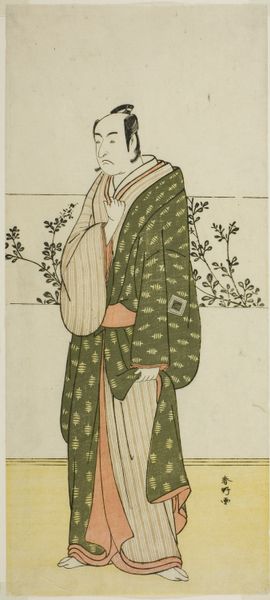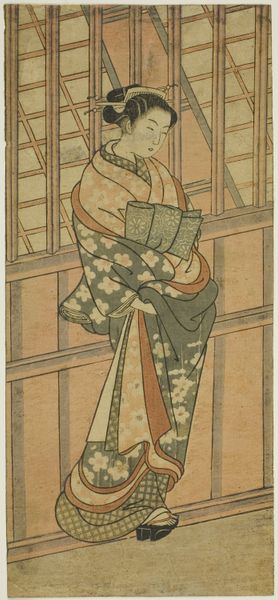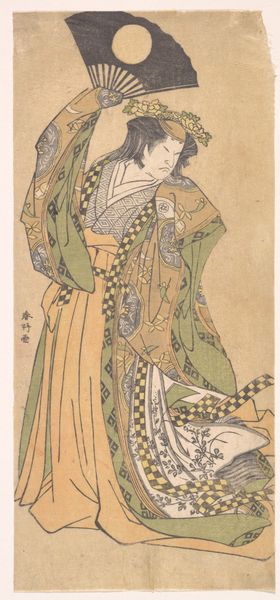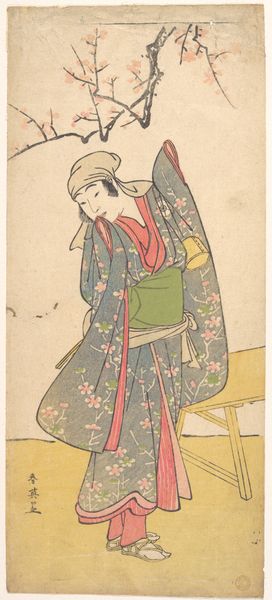
Finely-Dressed Woman Crossing Nihonbashi Bridge c. 1783
0:00
0:00
print, woodblock-print
#
portrait
# print
#
asian-art
#
ukiyo-e
#
woodblock-print
#
cityscape
Dimensions: 71.1 × 12.6 cm
Copyright: Public Domain
Curator: Here we have Torii Kiyonaga’s woodblock print, "Finely-Dressed Woman Crossing Nihonbashi Bridge," dating back to around 1783. It’s a work currently held in the collection of the Art Institute of Chicago. Editor: I am immediately drawn to the delicate restraint here. The muted tones and subtle patterns evoke such serenity, a certain poised elegance. There is something comforting about its sense of balance, between the figure and architectural structures in the background, between graphic blocks of text and image. Curator: Kiyonaga was a leading artist of the Torii school and a key figure in the ukiyo-e movement. I read his works as an ongoing exploration of gender dynamics and societal expectations placed upon women of the Edo period. He challenged dominant artistic forms by focusing on everyday experiences and locations, creating new narratives of identity and agency within a rapidly changing urban landscape. Editor: The way Mount Fuji is rendered in the background, as an almost ethereal symbol of permanence amidst the city's bustle, resonates deeply. And this woman…the tilt of her head, the set of her jaw; so calm and purposeful. The details are carefully encoded—her clothing, the bridge itself. They speak to a wider cultural story, wouldn't you agree? Curator: Absolutely. Kiyonaga’s meticulous representation of fashion, for instance, acts as a subtle form of social commentary. The expensive fabrics and elaborate obi sash suggest affluence but, moreover, participation in an emerging consumer culture that both empowered and constrained women. Nihonbashi Bridge wasn’t just a physical space, but a symbolic intersection where class, gender, and tradition converged. Editor: These symbols connect across time. A pagoda on the far shore is evocative of cultural identity, while the oversized hat and obscured face signal a complicated tension. She embodies beauty, certainly, but there are elements of wealth, ritual, and duty. All carry social, psychological, and historical meanings that extend far beyond what we immediately see. Curator: Yes, in essence Kiyonaga's woodblock print invites us to consider the intricate relationships between individual experience, urban development, and evolving notions of female identity in Edo-period Japan. Editor: So, ultimately this image serves as a complex portal—linking personal poise, shared histories, and enduring symbols into a surprisingly complete tableau.
Comments
No comments
Be the first to comment and join the conversation on the ultimate creative platform.













